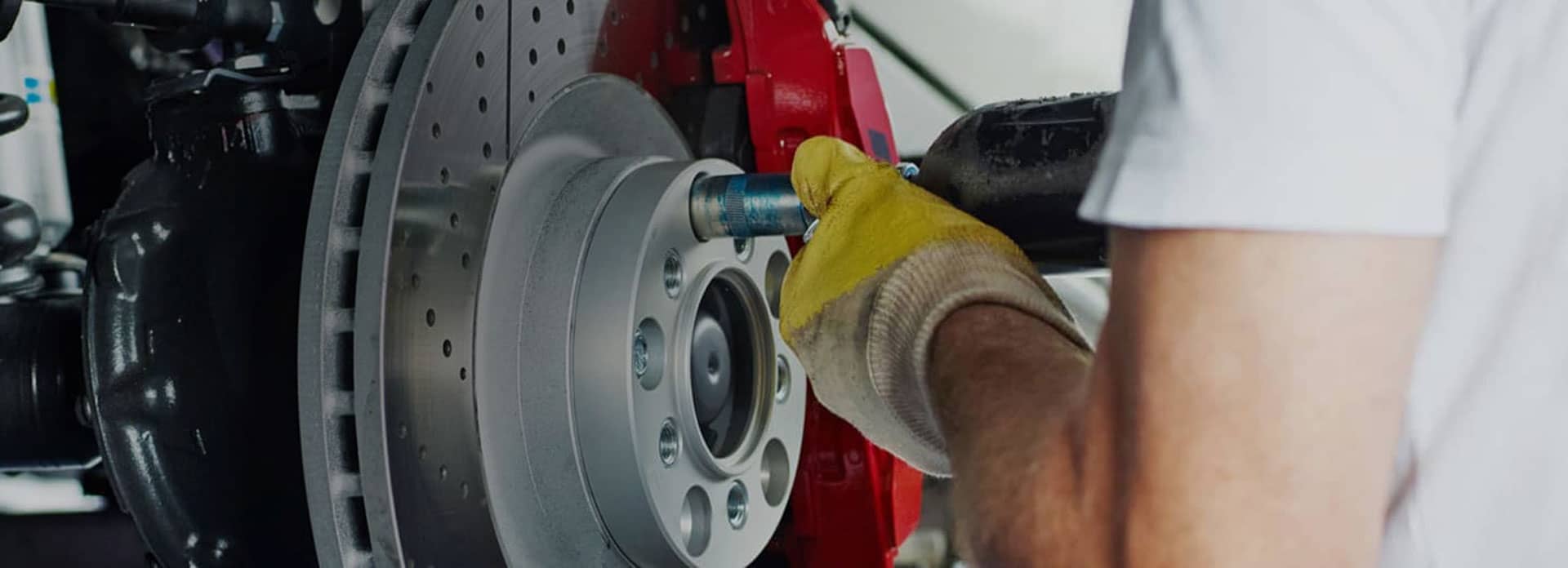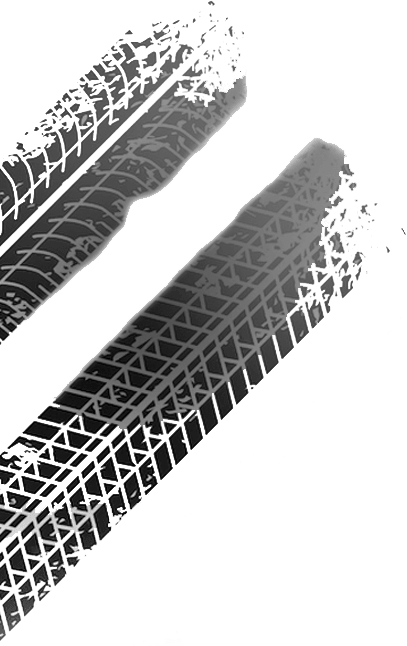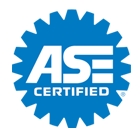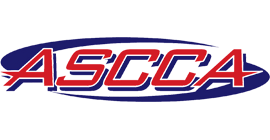
AUTONET TV
Archive for February 2024Not Too Hot and Not Too Cold (Temperature Gauge)Posted February 25, 2024 8:44 AMYou know your body temperature is supposed to be 98.6 degrees F, 37 degrees C. Your vehicle has a normal temperature, too, and if you pay attention to it, that can save you some big headaches down the road. Many vehicles have a temperature gauge on the dash that takes the temperature of the engine's coolant. Some have a thermometer symbol, some read C-H (cold to hot). Many will have a red zone that shows when water temperature is getting into the danger zone. Others are digital and have a red warning light that signals overheating. And some vehicles have a light that goes on when the engine temperature is out of the normal range. If your vehicle has a gauge, pay attention to it. If you need help locating it, ask one of our Gilmore's Auto Service experts to give you a quick explanation. Chances are when the vehicle has been running for 15 minutes or more, the temperature gauge will settle into its own "normal" zone, often just below the midway point. If you have a digital readout, remember what that "normal" temperature is. Here's why. At any point when you're driving, the temperature gauge is the quickest way to get a sense that the engine is running the way it should, a quick health checkup, as it were. Say you're on a 3-hour trip, glance at that gauge every hour or so. It should always be in the same spot. If it starts to move one way or the other, you may be able to catch a problem before it gets serious. Pay special attention to it moving into the hot zone. The needle on the gauge is the easiest and least distracting way to see an engine heating up, but on a digital gauge, start paying attention if the temperature reaches 240ºF/115ºC or more. Remember, though, that just because the gauge reads "hot" doesn't mean your engine is on the verge of burning up. It could be a bad sensor and the engine will be at a normal temperature. But it also could be a failing water pump, coolant leak or thermostat. By pulling off the road and observing your engine, it will give you a pretty good idea if it's running hot or not. If the gauge is too "cold," it could be a broken gauge or thermostat sticking open. Usually being in the cold range isn't as worrisome, but you should have it checked out since other systems may be affected. Heat is one of a vehicle's worst enemies, especially when it comes from within. Know your vehicle's normal temperature and keep an eye on it.
What's up with Diesels in Walnut Creek?Posted February 18, 2024 7:47 AMWould you be surprised to learn that about half of the passenger cars in Europe have diesel engines? You might also be surprised to learn that most manufacturers produce a variety of diesel-fueled cars for purchase abroad. Diesel engines have other advantages over gasoline engines. Diesel engines are heavier than gasoline engines because they require more heavy-duty parts, but that means the engines are more durable and can last longer than gasoline engines. Also, diesel engines may be the engines of the future since they can burn many of the new bio-fuels. When you switch from a gas vehicle to a diesel, you'll have to learn some new rules of vehicle care. But you won't be alone. Most Walnut Creek service centers are aware that diesels are coming to North America and are already prepared to provide service for diesel engines. At Gilmore's Auto Service, we are well-versed in diesel technology. You can rely on our team of automotive professionals to provide quality service for diesel-powered vehicles. Gilmore's Auto Service
When Are Your Tires Worn Out?Posted February 11, 2024 10:53 AM
Hey Walnut Creek area drivers, are your tires worn out? What is the standard for our CA streets? How can you tell on your vehicle?
So what happened with the 2/32 inch/1.6 mm tires on the car? Get this – when the car had traveled the distance required to stop with new tires, it was still going 55 mph/89 kph. Stopping distance was nearly doubled to 379 feet/116 meters, and it took 5.9 seconds. Gilmore's Auto Service
Walnut Creek Alignment ServicePosted February 4, 2024 11:00 AMYour car might have an alignment problem if: it drifts or pulls to one side, your steering wheel is off center, you have uneven tire wear or your car doesn't feel like it handles right. When all of a vehicle's wheels are lined up exactly with each other, your wheels are in alignment. Running into potholes around Walnut Creek and smacking a curb or other object are great ways to knock your car out of alignment. Then, one or more of your wheels starts pulling in a slightly different direction and the problems begin. Like most things, your manufacturer has suggested a mileage interval for having your alignment checked. But if you run into a curb, pothole or something else that's given you a big jolt, pay attention to whether your vehicle is pulling to one side when you drive. It's better to have your alignment checked before waiting to see if there is uneven tire tread wear - by then, the damage is done. Gilmore's Auto Service | ||
SearchArchiveJune 2020 (18)July 2020 (4) August 2020 (5) September 2020 (4) October 2020 (4) November 2020 (5) December 2020 (4) January 2021 (6) February 2021 (4) March 2021 (4) April 2021 (4) May 2021 (5) June 2021 (4) July 2021 (4) August 2021 (5) September 2021 (4) October 2021 (5) November 2021 (4) December 2021 (4) January 2022 (6) February 2022 (4) March 2022 (4) April 2022 (4) May 2022 (5) June 2022 (4) July 2022 (5) August 2022 (4) September 2022 (4) October 2022 (5) November 2022 (4) December 2022 (4) January 2023 (5) February 2023 (4) March 2023 (4) April 2023 (5) May 2023 (4) June 2023 (4) July 2023 (5) August 2023 (4) September 2023 (4) October 2023 (5) November 2023 (4) December 2023 (5) January 2024 (5) February 2024 (4) March 2024 (5) April 2024 (4) May 2024 (1) | CategoriesMaintenance (20)Shocks & Struts (4)Older Vehicles (3)Battery (11)Fuel System (21)Tires and Wheels (13)Serpentine Belt (3)Brakes (5)Service Standards (5)Differential Service (2)Automotive News (3)Fuel Economy (5)Service Intervals (3)Customer Detective Work (1)Steering (7)What Customers Should Know (28)Inspection (4)Warranty (1)Winter Prep (6)Parts (2)Check Engine Light (2)Timing Belt (2)Alignment (8)Transmission (3)Cabin Air Filter (4)Exhaust (6)Drive Train (3)Cooling System (7)TPMS (1)Dashboard (2)Fluids (6)Diagnostics (2)Keys to a long lasting vehicle (3)Air Conditioning (5)Tires (2)Safety (2)Monitoring System (1)Auto Safety (3)Spark Plugs (1)Oil Change (2)Alternator (2)Windshield Wipers (2)PCV Valve (1)Brake Service (1)Diesel Maintenance (1)Engine Air Filter (1) | |

OUR REVIEWS


Justin Lyon, 05/07/2024Phil was very helpful in scheduling my appointment and even starting to diagnose my issue over the phone. My car wouldn’t drive, wouldn’t go into gear, but he talked me through some troubleshooting and got me going again. That saved me a tow truck fee, thanks, Phil!

Get free Coupons
Take advantage of these great offers!
FREE COURTESY INSPECTION WITH REPAIR
First time customer? Come in for any paid repair work and let Gilmore's inspect your car at no extra cost to you.
No tricks. No Pressure.






